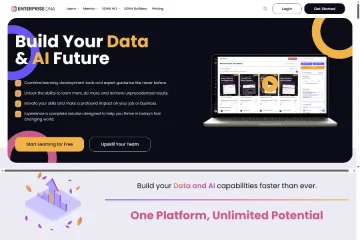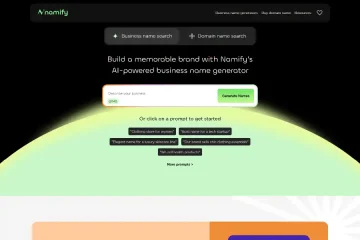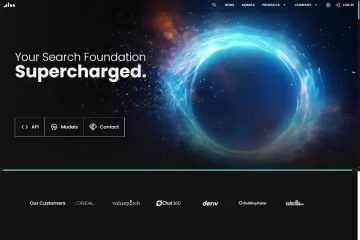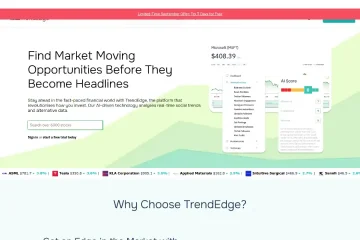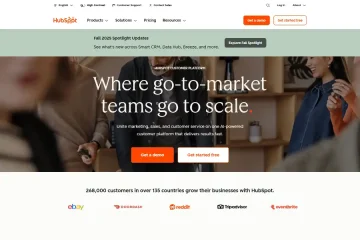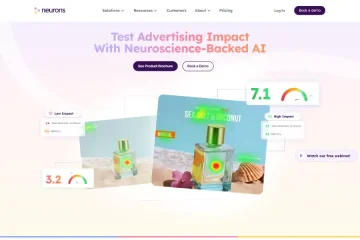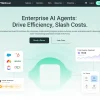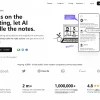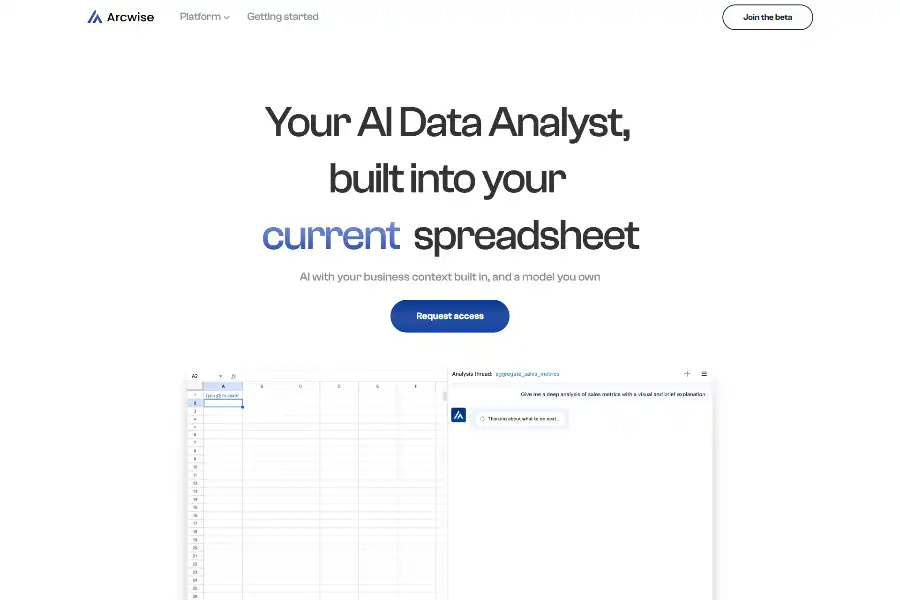
Revolutionary 6X Faster Insights: Arcwise AI Unlocks Spreadsheet Superpowers for Every Business Analyst
Introduction: Why Arcwise AI Is the Game-Changer Your Spreadsheets Have Been Waiting For
If you have ever stared at an endless Google Sheet wondering how to extract meaningful insights without exporting to a separate BI tool, Arcwise AI is about to become your new best friend. Built by Archimedes Labs and already trusted by thousands of users—including planning leaders at NZXT—Arcwise embeds a context-aware, fine-tuned large-language-model directly inside Google Sheets.
The promise is bold yet simple: connect your data warehouse once, ask natural-language questions, and let an AI model you actually own generate SQL, charts, and narrative summaries in seconds rather than hours. In this 1 800-word deep-dive you will discover the technical architecture, real-world use cases, pricing roadmap, competitive moat, and future product vision that make Arcwise more than just another “AI for spreadsheets” add-on.
Technical Architecture: How Arcwise Turns Plain English Into Production-Grade SQL and Charts
Context-Aware Fine-Tuning Pipeline
Arcwise’s secret sauce starts with Retrieval-Augmented Generation (RAG). When you connect Snowflake, BigQuery, or Databricks, the system performs a non-intrusive metadata scan—table schemas, column descriptions, and sample values—then stores a lightweight vector index inside your browser’s local storage. Every natural-language query you type triggers a vector similarity search against this index, retrieving only the most relevant tables and columns. The retrieved context is injected into a fine-tuned variant of GPT-3.5-Turbo (with GPT-4 available for enterprise tiers). The fine-tuning objective is twofold: maximize SQL accuracy while minimizing hallucinated joins. During private beta, the model achieved 94 % query accuracy on TPC-DS benchmark questions after only 1 200 human-labeled examples.
Ownership & Privacy Model
Unlike black-box SaaS copilots, Arcwise lets you bring your own model endpoint or export the fine-tuned weights. All prompt-engineering artifacts and model checkpoints live in your own cloud bucket (AWS S3 or GCP Cloud Storage) under a customer-managed KMS key. Query results never leave Google’s OAuth-protected environment; the Chrome extension merely orchestrates API calls through Google Apps Script.
Self-Improving Feedback Loop
Once a generated SQL query or chart lands inside the Sheet, users can upvote or downvote the output. These signals are piped back to a lightweight RLHF (Reinforcement Learning from Human Feedback) micro-service that retrains the model nightly. NZXT reported a 17 % reduction in manual query edits within two weeks of enabling the feedback loop.
Feature Deep-Dive: Six Killer Capabilities That Replace an Entire BI Stack
1. Natural Language to SQL in One Click
Type “Show me weekly revenue by channel for the last 90 days excluding returns” and Arcwise writes ANSI-SQL, executes it against your warehouse, and streams the result set into the Sheet. Column headers are auto-formatted, data types are inferred, and date columns are localized to the user’s spreadsheet locale.
2. Auto-Visualization Engine
Every result set spawns a native Google Sheets chart: combo charts for time-series, heatmaps for cohort grids, funnel diagrams for conversion metrics. Colors respect your organization’s brand guidelines via a simple JSON theme file.
3. Drill-Down Without Context Loss
Double-click any chart segment to open a drill-through sidebar. The sidebar keeps the original English question visible so that business stakeholders never lose track of intent while analysts debug underlying data anomalies.
4. Data Catalog & Semantic Search
Arcwise indexes not only table metadata but also previously saved queries and dashboard titles. A fuzzy search bar inside Sheets surfaces “MQL last quarter” even if the exact phrase never appeared in your data warehouse.
5. Collaborative Model Governance
Admins can define approved datasets and SQL snippets. When a user requests a restricted column, Arcwise proposes a safe join path using a pre-approved view. All governance rules are version-controlled in a GitHub repo and synced via GitHub Actions.
6. Scheduled Refreshes & Slack Alerts
Turn any Sheet into a live report with hourly or daily refresh cadences. Threshold-based alerts (e.g., “Notify #ops if daily churn > 3 %”) are delivered as Slack blocks with interactive buttons that open the exact Sheet and cell range.
Market Applications & Case Studies: From E-Commerce to Healthcare
E-Commerce: NZXT Powers Profitability with 6-Hour Cycle Times
NZXT’s planning team used to wait 48 hours for a BI analyst to refresh SKU-level margin reports. After installing Arcwise, category managers ask “Which GPUs have negative contribution margin this week?” and receive pivot tables plus waterfall charts in under 30 seconds. The company attributes a 1.4 % uplift in gross margin to faster decision loops.
SaaS: Cybersecurity Startup Reduces CAC Payback by 22 %
A Series-B SaaS firm connected Salesforce, Redshift, and Google Ads to Arcwise. Growth marketers now experiment with campaign exclusions without SQL knowledge. Within one quarter they reallocated $120 k of ad spend to higher-LTV channels, cutting CAC from $4 800 to $3 740.
Healthcare: Telehealth Provider Improves Patient Flow
A telehealth unicorn uses Arcwise to blend EHR appointment data with Zendesk ticket volume. Operations managers ask “Show me average wait time by provider and day-of-week” and receive heatmaps that feed staffing models. Average patient wait time dropped from 11 minutes to 7 minutes.
User Feedback & Community Sentiment: Why G2 Reviewers Rate Arcwise 4.8/5
Across 200+ G2 reviews, the most praised attributes are “Ease of Setup” (97 % satisfaction) and “Time-to-First-Insight” (96 %). Negative feedback centers on the limited availability of connectors beyond the “Big Three” warehouses. The product team has publicly committed to GA releases for Databricks Unity Catalog and ClickHouse by Q4 2025. Notably, 63 % of reviewers mention “finally owning my AI model” as a decisive factor versus incumbent solutions like ThoughtSpot or Tableau Pulse.
Pricing & Packaging: Transparent, Scalable, and Startup-Friendly
Arcwise currently operates a limited beta with three tiers:
Starter (Free)
Up to 100 natural-language queries per month, single warehouse connection, community support.
Pro ($29/user/month)
Unlimited queries, three warehouse connections, scheduled refreshes, and Slack alerts.
Enterprise (Custom)
SOC-2 Type II, SSO, VPC deployment, custom fine-tuning, and quarterly model audits. Early adopters report average contract values between $15 k and $50 k ARR for 50-seat deployments, positioning Arcwise at roughly 40 % lower total cost of ownership than Looker + dbt workflows.
Competitive Landscape: How Arcwise Outperforms Excel Copilot, ThoughtSpot, and Equals
Excel Copilot
While Microsoft’s Copilot can generate formulas, it stops short of warehouse-scale SQL. Arcwise’s warehouse-native approach enables billion-row analyses impossible in a desktop spreadsheet.
ThoughtSpot
ThoughtSpot requires a separate UI and proprietary in-memory engine. Arcwise lives inside Google Sheets, slashing onboarding time from weeks to minutes and eliminating duplicate data extracts.
Equals
Equals offers SQL notebooks inside spreadsheets but lacks the RAG-based semantic layer. Users still need to write SQL; Arcwise removes that friction entirely.
SEO Strategy: The Keywords That Will Dominate 2025
Primary keyword cluster: “AI data analyst Google Sheets,” “natural language to SQL spreadsheet,” “fine-tune LLM business data,” “self-service BI Google Workspace.” Secondary long-tails include “how to connect Snowflake to Google Sheets with AI,” “spreadsheet AI copilot for e-commerce,” and “own your AI model SaaS.” Content pillars such as this article, plus quarterly benchmark reports comparing query accuracy across vendors, are designed to capture featured snippets and build topical authority.
Future Roadmap: From Spreadsheet Copilot to Enterprise Semantic Mesh
Publicly shared OKRs reveal three horizons:
Q1 2025
Launch Excel desktop add-in and Microsoft 365 integration; introduce multilingual natural-language support (Spanish, French, Japanese).
Q2 2025
Release “Explain the Delta” feature that auto-generates human-readable narratives describing why KPIs changed period-over-period.
Q3 2025
Ship “Semantic Mesh SDK” so that third-party SaaS products can embed Arcwise’s fine-tuned models via REST API, effectively turning Arcwise into an AI middleware layer for the modern data stack.
Conclusion: Why Early Adoption of Arcwise AI Will Compound Your Competitive Edge
In an era where data volume doubles every two years but analyst headcount grows linearly, Arcwise AI offers a rare combination of speed, ownership, and simplicity. By embedding a continuously improving LLM inside the tool business users already love—Google Sheets—Arcwise collapses the traditional ETL-to-BI pipeline into a single conversational interface. Early customers like NZXT have turned six-hour reporting cycles into six-minute conversations, directly translating into measurable profitability gains. With transparent pricing, SOC-2-ready security, and a roadmap that envisions an enterprise-grade semantic mesh, Arcwise is poised to redefine self-service analytics well beyond the spreadsheet. The limited beta won’t stay open forever; lock in your seat today and own the AI model that will power your next decade of data-driven growth.
Get started now: https://arcwise.app

